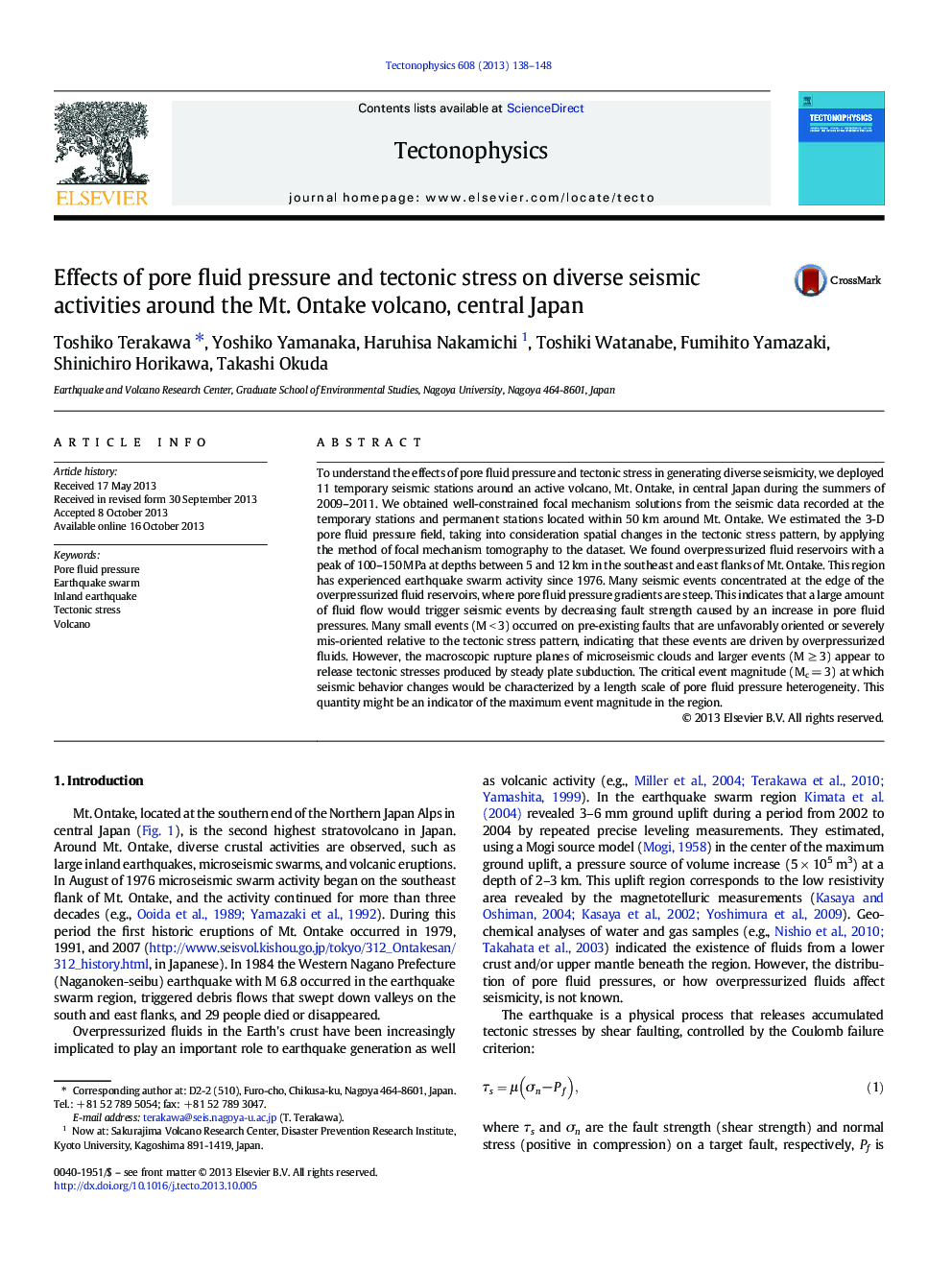| کد مقاله | کد نشریه | سال انتشار | مقاله انگلیسی | نسخه تمام متن |
|---|---|---|---|---|
| 6433929 | 1636779 | 2013 | 11 صفحه PDF | دانلود رایگان |

- We inferred the 3D pore fluid pressure field around Mt. Ontake from focal mechanisms.
- We found overpressurized fluids with a peak of 100-150Â MPa at 5-12Â km in depth.
- Many small events occurred on misoriented faults, driven by overpressurized fluids.
- Macroscopic structures and large events evolved to release tectonic stresses.
- The critical event magnitude might be an indicator for the maximum event magnitude.
To understand the effects of pore fluid pressure and tectonic stress in generating diverse seismicity, we deployed 11 temporary seismic stations around an active volcano, Mt. Ontake, in central Japan during the summers of 2009-2011. We obtained well-constrained focal mechanism solutions from the seismic data recorded at the temporary stations and permanent stations located within 50 km around Mt. Ontake. We estimated the 3-D pore fluid pressure field, taking into consideration spatial changes in the tectonic stress pattern, by applying the method of focal mechanism tomography to the dataset. We found overpressurized fluid reservoirs with a peak of 100-150 MPa at depths between 5 and 12 km in the southeast and east flanks of Mt. Ontake. This region has experienced earthquake swarm activity since 1976. Many seismic events concentrated at the edge of the overpressurized fluid reservoirs, where pore fluid pressure gradients are steep. This indicates that a large amount of fluid flow would trigger seismic events by decreasing fault strength caused by an increase in pore fluid pressures. Many small events (M < 3) occurred on pre-existing faults that are unfavorably oriented or severely mis-oriented relative to the tectonic stress pattern, indicating that these events are driven by overpressurized fluids. However, the macroscopic rupture planes of microseismic clouds and larger events (M â¥Â 3) appear to release tectonic stresses produced by steady plate subduction. The critical event magnitude (Mc = 3) at which seismic behavior changes would be characterized by a length scale of pore fluid pressure heterogeneity. This quantity might be an indicator of the maximum event magnitude in the region.
Journal: Tectonophysics - Volume 608, 26 November 2013, Pages 138-148